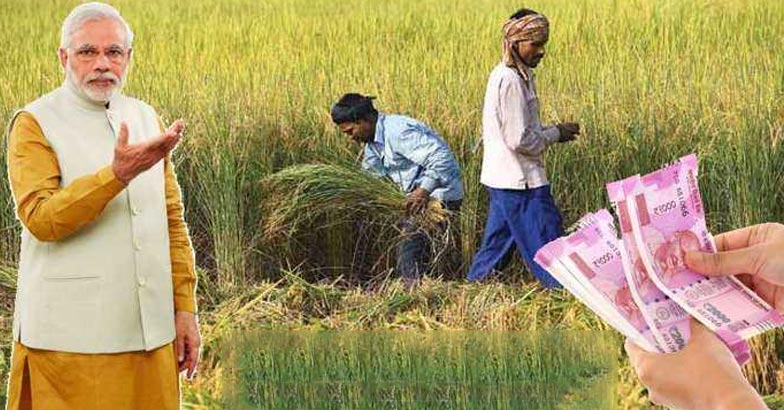In the poll manifesto, BJP promised to extend the PM-KISAN scheme for all farmers. So far only farming families with less than 2 hectares of land could avail the benefits of the scheme and therefore the total number of beneficiary families was estimated to be around 12 crore. Now almost 14.5 crore families would benefit which is around 97 percent of total farming families of the country. Only 2.6 crore tenant farmers who hold no land are excluded from the benefits of the scheme. The policymakers compare the PM-KISAN with MGNRGA – the flagship scheme of UPA and farm loan waivers – the latest electoral plank of Rahul Gandhi. Both the schemes are targeted at farmers and rural sector and therefore the comparison is obvious.
The previous governments misunderstood the cause of farmer’s problems and rural distress. Consider this, the country faced droughts in 2014 and 2015 which hurt the farmer’s income, but in 2015, 2016, 2018 – the country has record produce. However, the record produce resulted in a ‘crash in price’ given the fact that the country is sitting on huge stockpile of food. The produce is growing at the pace of 3 percent while the population growth is at 1 percent. Therefore, the best solution to the farming problem is pulling more people out of farming and rural areas and PM-KISAN would effectively do that.
The aim of rural welfare schemes is to increase the spending power of rural households, pull people out of poverty which is more prevalent in rural areas, and end woes of farmers. PM-KISAN outsmarts both farm loan waiver and MGNREGA it all these aims. It is well known fact that a very small number of small and marginal farmers have access to institutional credit. The farm loan waiver credits the credit culture while it benefits only a small percentage of farmers with large landholdings. The farm loan waivers are also ‘regressive’ in nature given the fact that loan amount is often proportional to land therefore large farmers benefit more than small farmers.
“Loan waivers create a lot of problems. I won’t compare those. Economically, I don’t look at loan waivers as a good solution. In contrast, an income support to farmers makes more economic sense,” said Chief Economic Adviser Krishnamurthy Subramanian.
The direct income support to farmers gives them freedom the use the money in the way they wish. Given the fact that farming is very high risk profession, direct transfer would hedge the risk of farmers as the directly transferred income could be used for essential needs if income recedes due drought / flood or any other risk.
The delivery of direct transfers is relatively easy and transparent as witnessed in subsidy transfers in bank accounts. The PM-KISAN is also very efficient compared to loan waiver or MGNREGA. Kamal Nath led MP government waived 10,123 crore of 25 lakh farmers. Going by this the party would require 40,000 crore rupees for 1 crore farmer families and 4.8 lakh crore rupees for 12 crore families. On the other hand, the direct transfer would require only 75,000 crore rupees for the ongoing fiscal year.
So, PM-KISAN will prove more transparent and efficient in solving the farming crisis in the country and end the rural distress. Farm loan waiver is ‘regressive’ and benefits the large farmers which results in widening the gap between the rich and poor. The farmers who do not have access to institutional are altogether left out of the waiver and these people are most vulnerable in the society.
